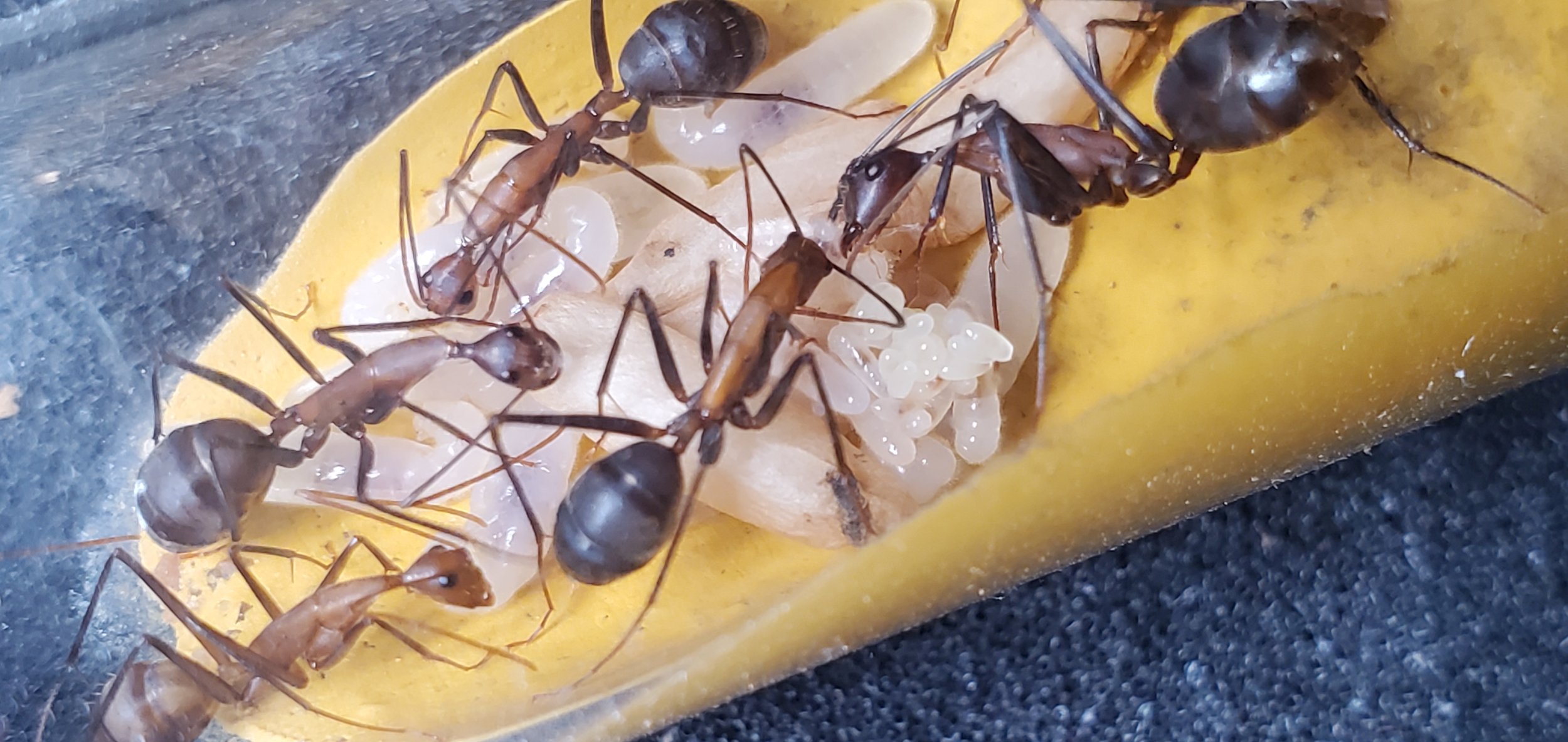Camponotus angusticollis, the Giant Slim Carpenter Ants
Three months ago, the colony had 1 Queen, 16 workers and a ton of pupae, larvae and eggs.
Camponotus angusticollis colony - today
As of today, I have counted at least 24 workers and similar amount of brood, though the pupae amount seems larger, which is a great news.
Camponotus angusticollis brood - 2 weeks ago
I did notice 3 or 4 workers did perish in the past couple of weeks, which was unfortunate, but I don’t think it was related to anything in particular except old age.
Camponotus angusticollis brood with development - today
I am absolutely loving this species and this colony behavior.
Although they like to forage only when night falls, they are always very protein oriented and they are not picky at all, which is amazing for a Camponotus species. It almost reminds me of a medium size Camponotus nicobarensis colony when it comes to handling their prey. Voracious!
Camponotus angusticollis worker waiting for food
I have plans to re-house this colony in few months time, hopefully when summer ends. Hopefully by then the colony will be big enough to have a larger nest and outworld.
Since I don’t have much more updates for them at this moment, I will leave you with two photos from Chinese collectors, which capture wild nests and sell them for a profit. Just check the size of these colonies, brood, and in particular the size of the majors.
Camponotus angusticollis wild caught colony - not my photo
Camponotus angusticollis wild caught colony - not my photo
Just look at the size of these colonies!! Impressive!! And for me what is more striking is the size of those soldiers! They seem to be almost the size of the Queen but surely more aggressive! :D
Cannot wait for my colony to produce its first soldier! :D
Fingers crossed for one soon, so I can complete my composition.
Well this is it for this log, thank you once again for taking the time to read.
Cheers!







